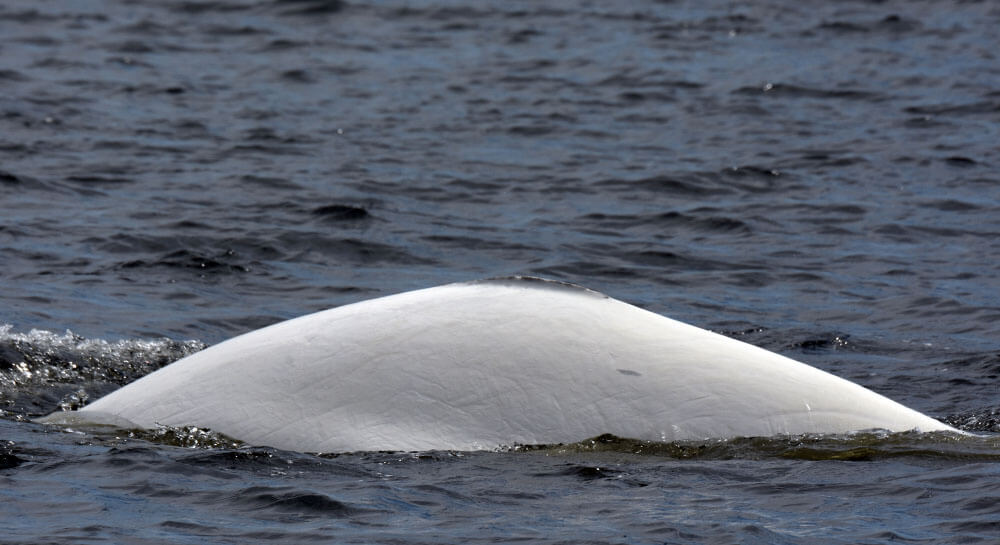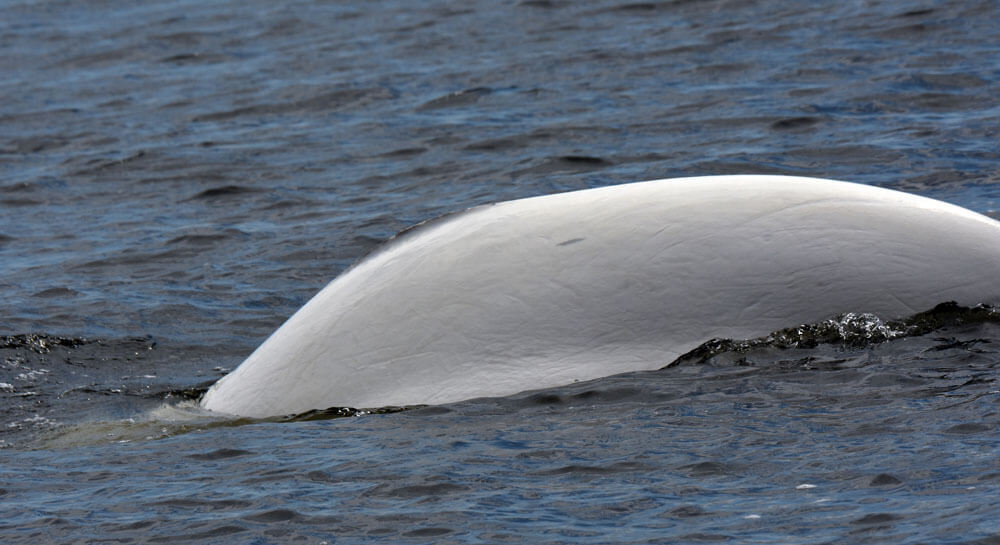Madeleine
Beluga


Adopted by the Bourgault family
-
ID number
DL2377
-
Sex
Female
-
Year of birth
Before 1995
-
Known Since
2005
Distinctive traits
Madeleine has small, distinctive notches in her dorsal ridge. On her left flank, she shows a thin black line between her head and her dorsal crest, which allows us to identify her easily from this side. She is more difficult to recognize from the right.
Life history
Our first encounter with Madeleine dates back to 2005. At the time, she was still grey. By the time she was next observed in 2007, she had turned white, though her dorsal crest remained dark. Belugas fade from grey to white in colour between the ages of 12 and 16, meaning Madeleine would have been born around 1995.
A biopsy of a tiny fat sample taken from her back in 2008 confirmed that Madeleine is indeed a female.
Within their summer range, females form large communities in which they care for newborns and young. These communities are faithful to traditional territories and, for Madeleine, the Saguenay seems to be particularly important. She is regularly observed with Pure Laine and DL0235.
Associations between females of the same community are generally not stable and can vary according to the females’ reproductive status, for example if they are pregnant or accompanied by young. Madeleine is often seen with young belugas, and was even spotted with a newborn in 2017. However, to date our observations have not yet allowed us to determine with certainty whether or not these were her own offspring. More in-depth data analysis will help shed light on her reproductivity, while a biopsy might help demonstrate whom she is related to.
How Madeleine’s story unfolds will help us better understand the social and reproductive lives of belugas. By better understanding how belugas live, we will be able to better protect them.
Regularly seen with...
Observations history in the Estuary
Years in which the animal was not observed Years in which the animal was observed
Latest news
July 3, 2019 : The BpJAM is back at sea for the 2019 field season, with the same team as last season.
The foggy morning forces us to stay docked : difficult to find a herd in the fog, and even more difficult to track it or to get a good idea of the belugas’ general behavior. We might as well take advantage of the “bad weather” to get on with our office work.
By early afternoon, the fog had lifted from the waters of the Saguenay-St. Lawrence Marine Park. Quickly, we still have enough time before dusk to set off in search of belugas. After a few dozen minutes of searching, we find a group of belugas downstream from Île Rouge, off Baie-Sainte-Catherine, about mid-channel. The herd numbers around forty white and gray individuals. Among them are DL0235, which GREMM has been tracking since 1990, and Madeleine.
The group is rather difficult to approach, sometimes multidirectional, sometimes “milling”, i.e. diving repeatedly and returning to the same spot. The behaviours of these belugas are quite interesting. At the surface, the belugas are active, spitting and vocalizing.
After two hours of taking identification photos to update our “family album”, we decide to launch the drone to get a better idea of what’s going on below the surface.
At first, we observed sociosexual behavior : pelvic thrusts, brushing up against each other, and so on. Then, what was hard to document from the boat becomes obvious : we observe, for the first time from the air, belugas hunting fish.
To see the video, check out this article!
On September 3, 2017, aboard Le Bleuvet, GREMM’s research boat, we headed for Ilet aux Alouettes, off Baie-Sainte-Catherine and Pointe Noire. Along the way, we come across a herd of 30 belugas, made up of adults, grays and a newborn calf. In the herd, we recognize Pure Laine, swimming with Madeleine! Alongside Madeleine is a newborn. Is it hers? Only further observations or a biopsy of both animals will enable us to confirm this. The more we observe these belugas, the more we get the impression that they swim in all directions. This type of behavior leads us to assume that they are feeding. Let them eat! We head off up the Saguenay to meet other herds.
Sponsor
The Bourgault family adopted Madeleine (2020).
For the 90th birthday of Madeleine Bourgault, born in Saint-Jean-Port-Joli.
May your descendants enjoy watching beautiful belugas!


